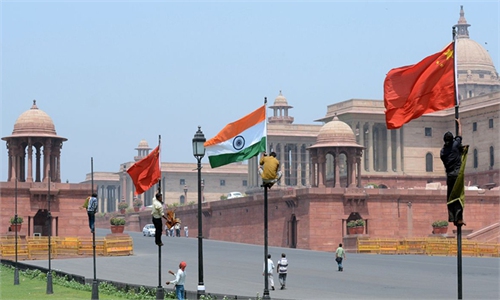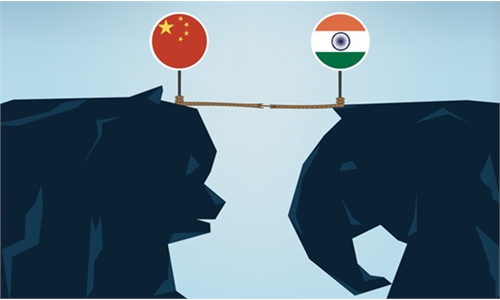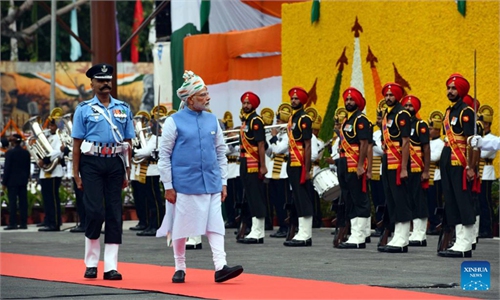
Illustration: Tang Tengfei/Global Times
While India has cashed in on the Western anxiety over Chinese supply chains with increased foreign investment, it would be delusional if the Modi government really believes the South Asian nation, with the help of the West, could replace China as the world's new manufacturing hub and realize its ambition of becoming an industrial power.Government data released on Wednesday showed that India's economic growth accelerated to 6.1 percent year-on-year in the January-March period, remaining one of the fastest growing emerging economies, according to Reuters.
Against the backdrop of the growing risks from a global slowdown, India's economic data looks rosy, which is not surprisingly seen by some as a proof of India's economic potential. But if India really thinks it can replace China based on invisible potential, it is actually being fooled by the West. Replacing China with India or Vietnam is nothing but a political stunt and a talking point pushed by the West, with the view of containing China's development, not helping India's rise. If India still fails to recognize the reality that the US will only make it a pawn instead of helping the Modi government to achieve its strategic aspiration of becoming an industrial power, its economic prospects will be worrying.
Ever since 2000, the Indian economy was supposed be on the rise in Western public opinion, but the strange thing is that after more than two decades of development, its economy still carries the high expectation of rapid rise accompanied with various chaotic problems in its business and industrial development.
If anything, rosy figures cannot mask some of the deep-rooted problems in the Indian economy, which are driving foreign firms to flee after entering the market for a few years. The latest example is the news that Apple supplier Wistron is winding up its India operations after doing business in the country for more than 15 years.
At a time when Apple is expected to double or triple investment in India over the next few years as it looks to cut reliance on China, Wistron's unexpected exit, to a certain extent, underscores the fact that the long-standing problems plaguing foreign companies in India's business environment have not improved significantly even though the Modi government has been actively pursuing industrial policies aimed at replacing China as the world's next manufacturing hub.
According to data from the Indian government, as many as 2,783 foreign companies and their subsidiaries ceased operations in India between 2014 and November 2021, including some notable ones such as Cairn Energy, Holcim, Daiichi Sankyo, Carrefour, Henkel, Harley Davidson and Ford, media reported.
Specifically, the business environment in India has long been one of the biggest concerns for foreign investors, especially many Chinese companies. India's unfair treatment to Chinese journalists recently highlights India's hostility to China, which Chinese companies must take into account when investing in India.
Moreover, India's lack of manufacturing base makes it hard for companies to seek cooperation for upstream and downstream needs locally. Poor infrastructure has led to difficulties in logistics, combined with a chronic shortage in skilled labor.
In the face of these problems that are unlikely to be addressed in the short term, India's silver lining in cheap labor is not enough to replace China's position in global supply chains.
In fact, the more India wants to replace China, the more its dependence on Chinese supplies grows. India's production of smartphones and other electronics products still relies heavily on imports of intermediate products from China, as indicated by the surge in bilateral trade between China and India. In 2022, China-India trade totaled $135.98 billion, hitting a new record high, with electronics products accounting for the biggest share in Chinese imports to India.
It is after more than four decades of reform and opening-up efforts that China has achieved its current manufacturing scale and strength. By comparison, India's manufacturing sector just started toddling. It should not forget its own reality and lose it way in Western flattery.
Of course, it doesn't mean India cannot develop its own manufacturing. But India needs to wake up from the dream of replacing China. A fantasy development goal based on a Western political agenda will only serve to keep the handbrake down on India's true economic potential.



